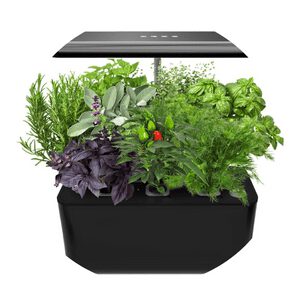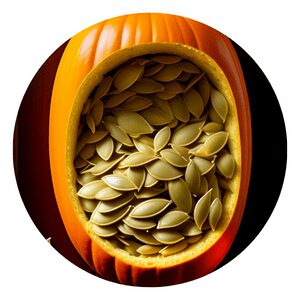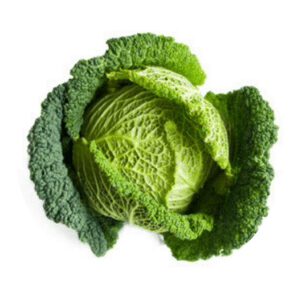Does Arugula Grow Back After Picking?
Arugula is a popular leafy green vegetable that can be used in salads, pastas, and more.
If you’re looking to add some flavor to your meals, arugula is the perfect choice.
But many gardeners are curious if arugula grows back after picking it from the plant.
In this article, we’ll discuss whether arugula returns after harvesting and provide tips for regrowth.
Arugula Menu
Arugula Plant Basics
Arugula is an easy-to-grow salad green that grows quickly and produces multiple harvests throughout the growing season.
The plant typically takes about 30 days to reach maturity, and can be harvested several times before the entire plant is spent.
After harvesting, the plants regrow from the cut stems and continue producing more leaves until temperatures become too cold or the season ends.
Arugula should be planted in a sunny location with well-draining soil, watered regularly, and kept free of weeds to ensure optimal growth.
Depending on your climate, you may need to provide some protection against extreme heat or cold as arugula does not tolerate temperatures over 85°F or below 25°F for extended periods of time.
Fertilizing once every two weeks with an organic fertilizer will help to keep your arugula plants healthy and productive.
Finally, it’s important to harvest arugula often so the leaves remain tender; otherwise they can become tough and bitter tasting.
Description of arugula plant
Arugula is an annual, cool-season leafy green vegetable in the mustard family that is native to the Mediterranean region.
Its scientific name is Eruca vesicaria and its common names include garden rocket, roquette, rucola, rugula, and colewort.
It has a distinct nutty flavor with a hint of pepper and works well in salads or as an ingredient in pesto sauces.
Arugula plants are relatively easy to grow from seed or transplants and do best in moist soils with good drainage.
When harvesting arugula leaves for fresh eating, it’s important to wait until they have reached 4-5 inches long before cutting them off at the base with scissors or your fingers.
If you pick young leaves from plants that are still maturing you can expect more growth from those plants as they continue to develop over time.
With regular picking and proper care (watering about once per week) arugula can provide multiple harvests throughout the season depending on the variety being grown.
The same goes for when growing arugula indoors: it will keep producing new leaves if harvest regularly and kept under optimal conditions such as plenty of light and adequate water.
Nutritional value of arugula
Arugula is a nutritious leafy green, packed with essential vitamins and minerals.
It contains numerous antioxidants that can help reduce inflammation in the body.
A single cup of arugula contains just 5 calories, 1 gram of protein, 0 grams of fat and 0 grams of carbohydrates. It’s also a great source of dietary fiber, providing 2 grams per cup.
Arugula is high in several vitamins and minerals including Vitamin A (22% Daily Value), Vitamin C (14% DV), Folate (5% DV) and Calcium (2% DV).
In addition to these nutrients it also offers manganese, magnesium, iron and potassium as well as small amounts of zinc and phosphorus.
Eating arugula can provide many health benefits including anti-inflammatory properties which may help reduce the risk for certain chronic diseases such as heart disease and cancer.
Additionally, its high vitamin content helps support eye health while its calcium content promotes bone health.
All together this makes arugula an excellent choice for adding nutrition to your diet without extra calories or fat.
Types of arugula
Wild Arugula: Wild arugula is the most common type of arugula, and it has a more intense flavor than other types.
It can grow up to 24 inches tall and has deeply lobed leaves.
Its flavor is described as spicy, peppery, and nutty.
This variety of arugula grows best in full sun but will tolerate some shade.
It does not need much water and prefers well-draining soil with a pH between 6 to 7.
Wild arugula will regrow after harvesting if planted in a location that receives plenty of sunshine and if the soil is kept consistently moist.
Rocket Arugula: Rocket arugula is another popular type of arugula that has an even spicier taste than wild arugula.
Its leaves are smaller and more pointed than wild arugula, making them ideal for salads or sandwiches.
This variety of arugula grows best in well-drained soils with a pH between 6 to 8 and requires full sun exposure for optimal growth.
Similar to wild arugula, rocket can regrow after harvesting if planted in an area that gets plenty of sunlight and adequate moisture is provided over time.
Dwarf Arugla: Dwarf Arugla is an incredibly compact variety that only grows up to 12 inches high when mature.
Sprouting with sunlight and care, The arugula's growing everywhere! It's peppery bite tastes so sweet, When it's picked it's surely a treat. Harvest times come for us all, But each season this leaf does not fall. It grows back year after year - Whoever planted was so very wise and clear.
Chappy The Gardener
Harvesting Arugula
Harvesting arugula is a simple process.
When harvesting arugula, the plant should be cut just above the soil level using sharp scissors or a knife to ensure that no damage is done to the roots.
It’s important not to over-harvest as doing so can weaken the plant.
Generally, it’s best to only take about one-third of the leaves at a time from each plant – this will allow for new growth and continual harvests.
The leaves are ready for picking when they reach between 4-6 inches in length; any larger and they may become bitter in taste.
After harvesting the arugula, it regrows quickly and often provides multiple harvests throughout its growing season with proper care.
To maximize yields, make sure that plants are kept well watered and fertilized regularly with an organic fertilizer such as compost or fish emulsion.
Additionally, deadheading flowers can also help encourage more leaf production.
With these steps taken care of, you should be able to enjoy fresh arugula all season long!
When to harvest arugula
Arugula is a fast-growing and highly nutritious leafy green that is popular in salads and sandwiches.
When to harvest arugula depends on how you want to use it.
If you’re harvesting for baby greens, you should pick the leaves when they are young and tender, about 2–3 inches long.
However, if you’re harvesting for mature leaves, wait until the plants are 4–5 inches tall with fully developed leaves.
To ensure a continuous supply of arugula, it’s best to plant successive crops every two weeks so that you can have fresh vegetables all season long.
To optimize flavor and texture, always harvest arugula when the temperature is cooler—early morning or late evening are the best times.
Warm weather causes arugula to become bitter and tough quickly due to its high water content.
Also make sure to avoid harvesting during midday heat because this will cause wilting and reduce quality of your crop.
During hot temperatures above 80°F (27°C), cut only what you need right away as leaving picked arugula sitting in warm temperatures will cause it to spoil quickly.
Picking arugula leaves
Arugula, also known as rocket, is a popular salad green in many parts of the world.
It has a sharp, peppery flavor that adds zest to salads and other dishes.
The good news is that arugula can be harvested multiple times during the growing season without harming the plant.
As long as you don’t pick every single leaf at once, it will keep growing back.
When picking arugula leaves from your garden, you should start by selecting only the outermost leaves.
These are usually larger and more mature than those at the center of the plant or rosette.
That way, you’ll leave plenty of foliage remaining for photosynthesis and new growth to occur.
If harvesting all of the leaves on a particular plant is necessary due to disease or pests, then wait until it has recovered before harvesting again.
It’s best to cut off just enough leaves so that they are roughly 1 inch above where they join with stems on each branch or rosette.
This allows for some extra foliage after trimming and prevents overly vigorous pruning which could damage future yields from that same plant.
If done correctly, you can expect several harvests throughout most of their growing period – usually around two months or so depending on your climate and length of seasonality in your area.
Proper cutting techniques
When harvesting arugula, it is important to use proper cutting techniques to ensure that the plant can regrow and produce more leaves.
The best way to harvest is by snipping individual leaves off with a pair of sharp scissors or pruners.
To do this, hold the stem firmly and make a clean cut just above the base of the leaf where it meets the stem.
Do not pull the leaves off as this can damage the plant and reduce its ability to regrow.
When using scissors or pruners, be sure to disinfect them between cuts in order to avoid spreading any diseases from one plant to another.
Additionally, try not to remove more than one-third of a plant’s total foliage at once so that it has enough energy for new growth following harvest.
Taking these precautions will help ensure that your plants are able to continue producing delicious arugula for years!
Post-harvest care
After picking the arugula, it is important to practice post-harvest care in order to ensure its longevity.
Immediately after harvesting, the plants should be washed thoroughly to remove any dirt or debris.
If they are going to be stored for a long period of time, it is best to wrap them in paper towels and then place them in a perforated plastic bag before refrigerating.
This prevents moisture loss and wilting.
The arugula can also be frozen; simply blanch it before freezing for best results.
When ready to use, thaw the frozen arugula in cold water and drain off any excess liquid.
If you wish for your arugula crop to regrow, proper post-harvest care is critical as well.
After harvesting, clip off any damaged or wilted leaves from each plant and discard them.
Keep the remaining healthy leaves on the plant and water regularly so that they do not dry out completely; this will help promote re-growth of new leaves once conditions are favorable again (such as with cooler temperatures).
Additionally, fertilize lightly every couple of weeks during its growth cycle in order to provide adequate nutrients for further regrowth.
Does Arugula Grow Back After Picking?
Arugula is a nutritious and delicious leafy green vegetable that can be eaten raw or cooked.
It grows in both spring and fall, but it’s at its peak flavor when harvested during the cooler months.
The good news is, you can pick arugula several times during its growing season without sacrificing quality or taste.
If you harvest arugula properly by cutting off the leaves with scissors or a sharp knife, leaving some of the leaves attached to the plant, then it will grow back quickly and continuously throughout the season.
However, if you pull up whole plants or take too many leaves at once, you may not get a second crop of arugula since the plant will have used up most of its energy reserves.
To ensure long-term productivity from your arugula crop, make sure to leave some of the younger leaves intact so they have time to mature before harvesting again.
Arugula plant's regrowth abilities
Arugula is an easy-to-grow plant that can regrow from cuttings, even after the leaves are picked.
The plant will produce new leaves in a matter of days if the existing stems and roots remain intact.
This makes arugula a great choice for home gardeners who want to enjoy the fresh taste of this leafy green vegetable throughout the growing season.
When harvesting arugula, it is important to take only a few outer leaves from each plant so as not to damage or kill it.
If you take too much, you may stunt its growth and limit its future production.
Once harvested, allow the remaining stems and roots to stay in the ground with soil covering them up; this will ensure that they receive enough moisture and sunlight for optimum regrowth.
Within just a few days of being left alone, new leaves should start emerging from where you removed some earlier on!
Overall, growing arugula provides both a delicious treat and an opportunity for continuous harvests throughout the growing season without having to replant multiple times every year.
With proper care and attention it’s possible to keep your arugula plants vibrant until frost arrives!
Factors that impact regrowth
One of the biggest factors that impact regrowth is the current climate.
In cold climates, arugula will require more regular harvest and may not have enough time to go to seed and reproduce.
This means that it won’t come back after being harvested, or at least not in a significant amount.
On the other hand, arugula does well in warm environments with plenty of sunlight, making it ideal for longer growing seasons and multiple harvests from just one crop.
Another factor is soil quality and fertility.
Arugula needs nutrient-rich soil to thrive and grow back successfully after being harvested.
Without proper nutrition, plants can become weak or even die off completely if they are overharvested without replacing essential nutrients like nitrogen and phosphorus.
Finally, water availability also plays an important role in providing the right conditions for regrowth; too much water can lead to fungal diseases while too little can cause wilting or death of the plant before it has a chance to recover from harvesting.
Tips to encourage regrowth
One way to encourage regrowth is to pick young, small leaves.
Arugula is known for its rapid growth rate and the best way to ensure that you get a continued supply of fresh arugula leaves is by harvesting only the younger, smaller leaves and leaving the larger, older leaves intact.
This will allow the plant to focus its energy on producing new stems and leaves rather than replacing those already picked.
Additionally, be sure not to over-harvest from any one plant – removing more than two-thirds of the leaf material can exhaust it too much and prevent it from restoring itself.
Another tip when encouraging regrowth involves watering techniques.
Provide enough moisture for your arugula plants but don’t overwater them – this can lead to excessive foliage growth which can weaken stem strength and reduce overall yield production.
Properly hydrated plants are healthier overall, so if you want your arugula crop to come back strong after picking make sure they have regular access to water without getting soggy or starved of vital nutrients.
Finally, provide adequate fertilization for your plants throughout their growing period as well as during periods of regrowth after harvest.
Fertilizers with nitrogen are great for promoting healthy foliage while phosphorus helps promote root development which aids in replenishing lost nutrients faster post-harvesting.
In conclusion, arugula is a great vegetable to grow in your garden because it is easy to take care of and will regrow after picking.
It grows best in well-drained, slightly acidic soil and should be watered regularly for optimal growth.
You should pick the leaves as soon as they become mature or wait until the plant has gone to seed if you want to save some of the edible leaves for later.
Arugula also makes a great addition to salads and sandwiches.
Click To Grow
Helps Us Grow – Share If You Like


















